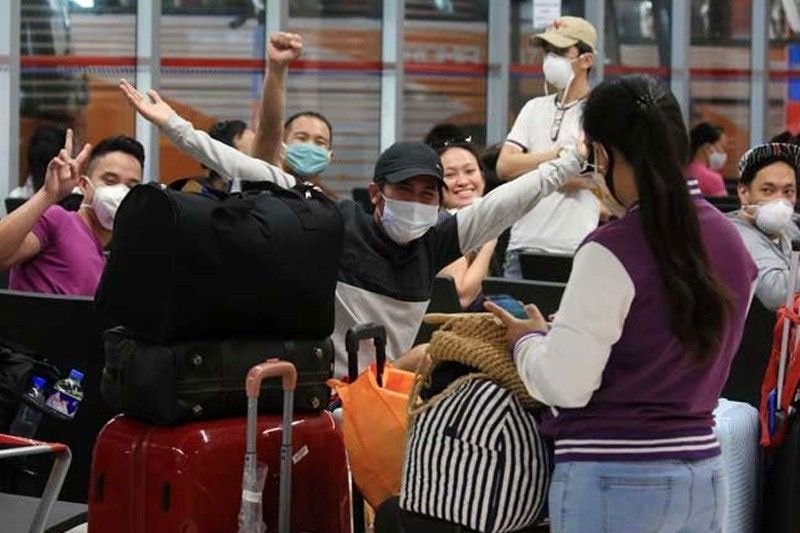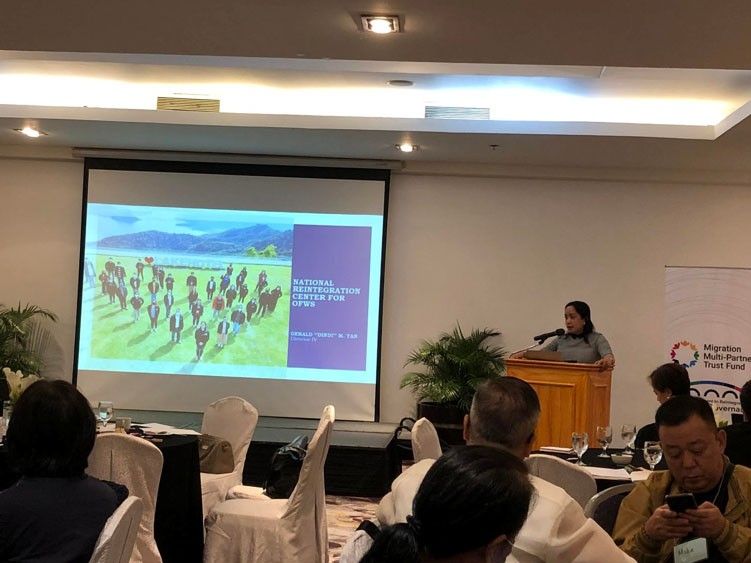A generation of OFW reintegration needs reinvigoration

Two and a half years into the COVID-19 pandemic, the Philippine government has capped off its efforts to put together the most extensive array of economic and psycho-social assistance for returning overseas Filipino workers (OFWs) in history. In simpler terms, returnees were given more means by government agencies to try and have a productive return to the Philippines, albeit for good.
OFWs who returned home were greeted with cash grants, business loans, start-up kits for beginner entrepreneurs, scholarships for their children, free vocational-technical online courses, some psychosocial counseling, and group activities. These various programs and services responded to at least 1,835,866 OFWs who returned home exactly two years into the pandemic.
The numbers may be underestimated: At least 728,826 returnees have received these varied forms of economic and psycho-social support during the first two years of the pandemic. The COVID-19 pandemic led to what is perhaps the most extensive reintegration effort by the Philippines. The numbers do not include the quiet efforts of OFW Family Circles (voluntary) nationwide, of migrant non-government organizations, and of the business sector.

A fresh policy study by the Ateneo de Manila University’s Center for Economic Research and Development (ACERD) notes that the Philippines’ efforts to handle returnees’ social and economic needs have reached 39 years old (including this pandemic). The first documented reintegration-related program was the organizing of “migrant worker family circles” by the former Welfare and Training Fund for Overseas Contract Workers (now the Overseas Workers Welfare Administration or OWWA).
And natural and man-made crises have come and go: the 1990 Gulf War, the 1997 Asian financial crisis, the 2003 Severe Acute Respiratory Syndrome (SARS) outbreak, the 2006 civil strife in Lebanon, the 2007-2008 global financial and economic crisis, the 2011 Arab Spring, the years when seafarers were held hostage by pirates, and the rescue of low-skilled OFWs (especially domestic workers) from abusive employers and international traffickers. Distressed land- and sea-based OFWs have been assisted —from repatriation in the host country to returnees’ re-immersion in their communities of residence or birth.
Some Filipino migration analysts have remarked that OFW reintegration is the “weakest link” in the country’s migration management program. The context here is that the country excels in regulating recruitment and manning agencies; in sending would-be and repeat OFWs through regular channels; in having embassies and consulates attend to OFWs’ needs; in capturing job opportunities abroad through labor market information; in policing errant recruitment agencies; and in fighting for the rights and welfare of migrant workers through bilateral, multilateral and global channels.
But since Filipinos still feel challenges in achieving gainful incomes and expanding the number of decent jobs, not even reintegration efforts by government can highlight the potentials of return migration in development. The “weakest link” tag on migrant reintegration perhaps continues to emerge since the Philippines still sends out as many workers, but has yet to feel the might of dollar remittances and their development potential at home.
The COVID-19 pandemic then provided the interesting twist: deployment of workers abroad screeched to a near halt. Those OFWs who have returned outnumbered those who left these past two years. And this “weakest link” suddenly became the frontliner.
Some 39 years hence, those helping OFWs have come to realize that migrant reintegration is a “big elephant in the room” that still cannot come out of its cocoon. Those agencies involved in helping OFWs have sustained their economic and social reintegration programs. Those agencies outside of the migrant sector do not have OFWs as primary clients, but these agencies have their own programs and services. These agencies have collaborated, but these collaborative efforts are one-off, reactionary, and the amounts extended are miniscule vis-à-vis today’s cost of living (as admitted by a migrant reintegration official recently).
As for government agencies concerned, they are trying their best even if many of these interventions are reactive. These agencies can only hope that better economic growth by the country (experienced last decade) will be the more enticing reality for OFWs to return and to stay home for good.
The world awaits the formal declaration of an endemic. Countries will again recruit foreign workers. The Philippines will resume migrant deployment, covering those who were stranded from leaving (due to travel bans) and those wanting to try out overseas work. Artificial intelligence continues to sweep many business operations worldwide, threatening the human workers actually doing such work. Two years into the pandemic, a fresh non-random survey of pandemic returnees (N=1,224) by the International Organization for Migration and the Scalabrini Migration Center found that some 52 percent of returnees claim to live below the poverty line.
Reintegrating in this era of recovery will admittedly be tough.
Thus, this running COVID-19 pandemic provide the chance for the Philippines to rehash its migrant reintegration program. Now the Department of Migrant Workers is set to implement what is called full-cycle reintegration —with coming back home and its demands for returnees imbibed prior to departure, while overseas, and in the eventual return (be it temporary for permanently). But this full-cycle reintegration is a broad-ranging development intervention that cannot anymore be submerged within the agencies directly helping OFWs.
The entire government also has a range of development interventions: developing our micro-, small- and medium-scale enterprises (MSME), financial inclusion, mental health, universal health care (UHC), agricultural productivity, even social protection. Migrant reintegration penetrates itself in all these broader development needs because returning migrant workers require all these other things in their reintegration journey. Multifarious agencies in government have national strategies and plans in these areas, even with private sector and civil society involvement.
The 40th year of migrant reintegration this 2023 demands a fresh wind of change that is not merely fronted by the formal operationalization of the Department of Migrant Workers. Clearer inter-agency and inter-sectoral collaboration, higher amounts of assistance, more mental health and psycho-social interventions, widespread business counseling, and better reintegration governance that local governments feel may all help soothing OFWs’ reintegration experience.
--
The nonprofit Institute for Migration and Development Issues (IMDI) does policy research, databanking and writing social commentaries on migration and development issues in the Philippines. Email: [email protected].
- Latest

























